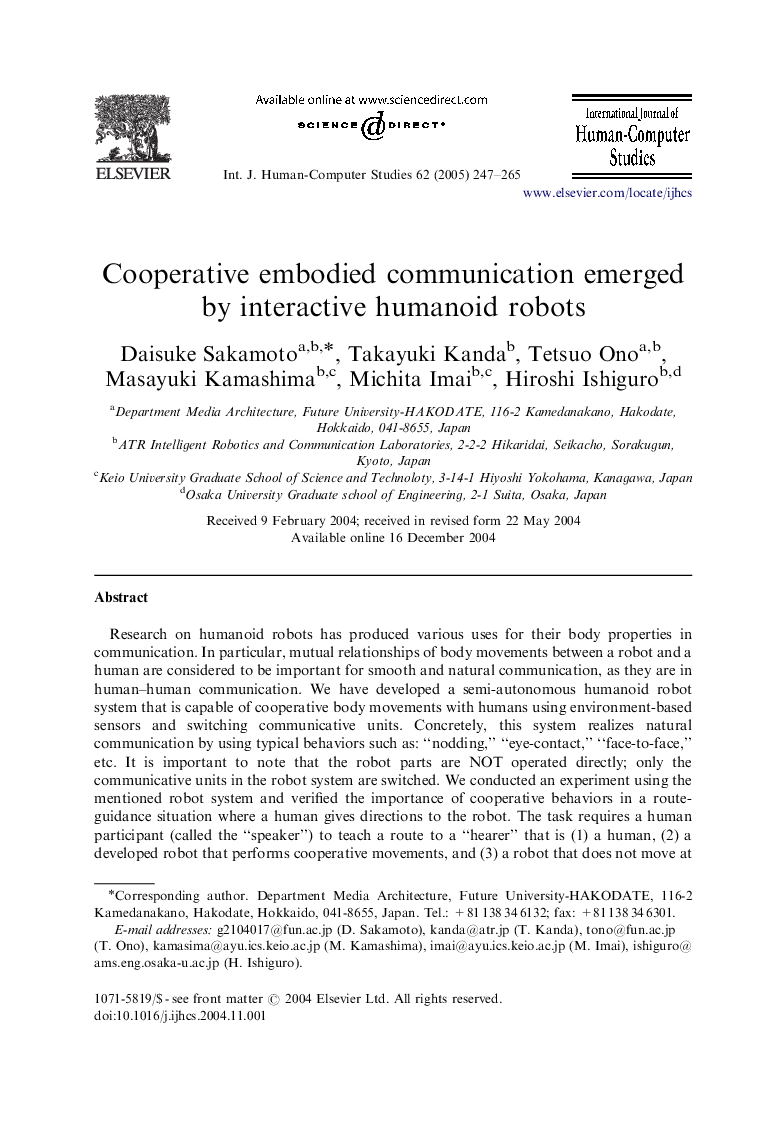| Article ID | Journal | Published Year | Pages | File Type |
|---|---|---|---|---|
| 9652535 | International Journal of Human-Computer Studies | 2005 | 19 Pages |
Abstract
Research on humanoid robots has produced various uses for their body properties in communication. In particular, mutual relationships of body movements between a robot and a human are considered to be important for smooth and natural communication, as they are in human-human communication. We have developed a semi-autonomous humanoid robot system that is capable of cooperative body movements with humans using environment-based sensors and switching communicative units. Concretely, this system realizes natural communication by using typical behaviors such as: “nodding,” “eye-contact,” “face-to-face,” etc. It is important to note that the robot parts are NOT operated directly; only the communicative units in the robot system are switched. We conducted an experiment using the mentioned robot system and verified the importance of cooperative behaviors in a route-guidance situation where a human gives directions to the robot. The task requires a human participant (called the “speaker”) to teach a route to a “hearer” that is (1) a human, (2) a developed robot that performs cooperative movements, and (3) a robot that does not move at all. This experiment is subjectively evaluated through a questionnaire and an analysis of body movements using three-dimensional data from a motion capture system. The results indicate that the cooperative body movements greatly enhance the emotional impressions of human speakers in a route-guidance situation. We believe these results will allow us to develop interactive humanoid robots that sociably communicate with humans.
Related Topics
Physical Sciences and Engineering
Computer Science
Artificial Intelligence
Authors
Daisuke Sakamoto, Takayuki Kanda, Tetsuo Ono, Masayuki Kamashima, Michita Imai, Hiroshi Ishiguro,
